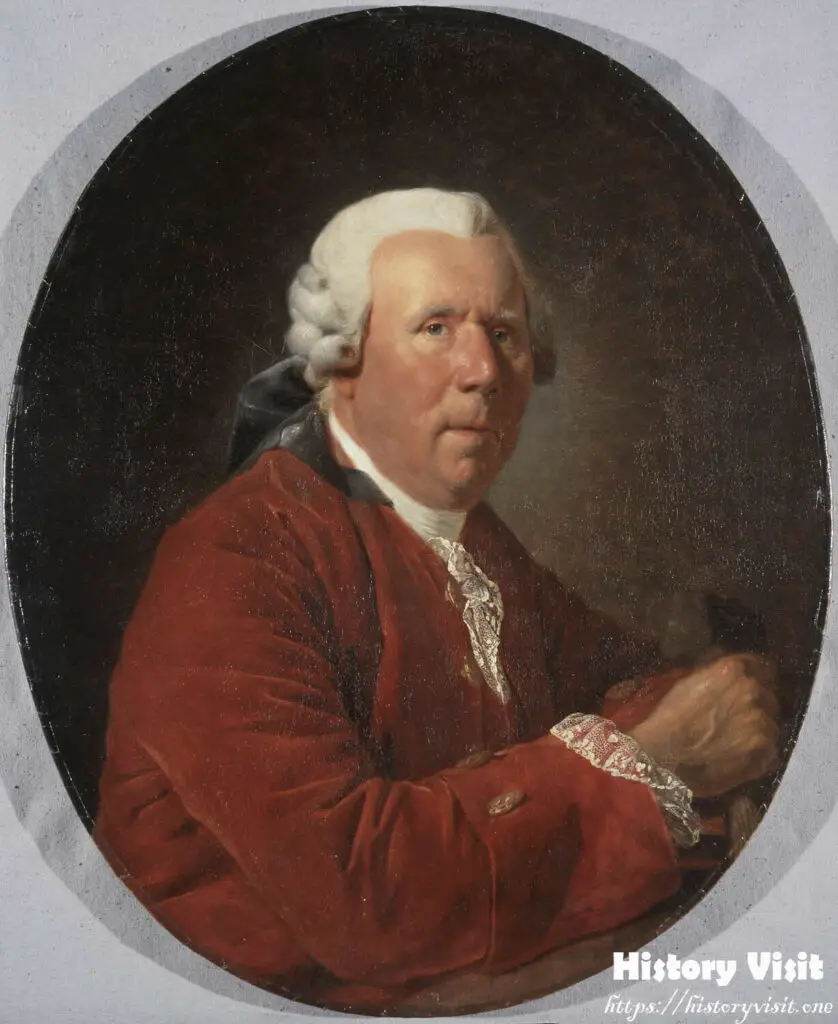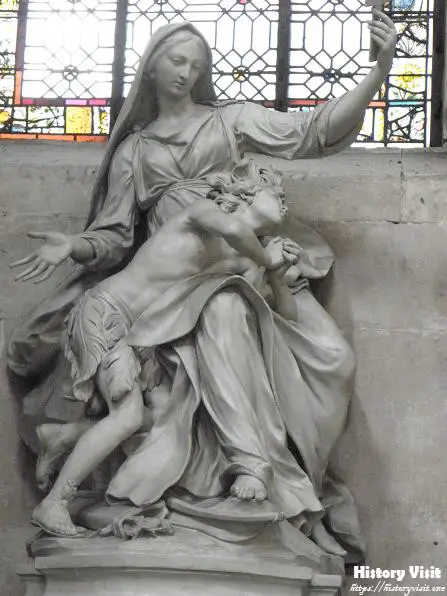Nicolas-Sébastien Adam: A Pioneer of French Baroque Sculpture

Introduction
Nicolas-Sébastien Adam stands as a towering figure in the annals of French Baroque sculpture, his works embodying the grandeur and dynamism of the era. Born into a family of artists, Adam’s early exposure to art laid the foundation for his illustrious career. Apprenticed to renowned sculptors, he honed his craft and developed a distinctive style that would leave an indelible mark on the art world.
Throughout his career, Adam undertook numerous commissions for prestigious patrons, including royalty and nobility, crafting monumental sculptures that adorned palaces, churches, and public spaces across France. His works were celebrated for their exquisite detail, emotional depth, and mastery of form, earning him widespread acclaim and securing his place as one of the foremost sculptors of his time.
As we delve into the life and legacy of Nicolas-Sébastien Adam, we gain insight into his artistic vision, innovative techniques, and enduring influence on French Baroque sculpture.
Early Influences and Training
Nicolas-Sébastien Adam’s journey as a sculptor began with his upbringing in a family of artists, where he was immersed in the world of art from a young age. Under the guidance of his father, François-Gaspard Adam, a renowned sculptor, and his uncle, Lambert-Sigisbert Adam, a prominent figure in the French Baroque movement, Nicolas-Sébastien learned the fundamentals of sculpting and absorbed the stylistic influences of the time.
During his formative years, Adam embarked on an apprenticeship with François Dumont, a leading sculptor in Paris, where he further refined his skills and acquired the technical expertise necessary for his craft. His apprenticeship provided him with invaluable hands-on experience and exposed him to the rich artistic milieu of the French capital, shaping his artistic sensibilities and laying the groundwork for his future success.
Adam’s training under Dumont proved instrumental in shaping his artistic style, which seamlessly melded the classical traditions of sculpture with the dynamism and expressiveness of the Baroque aesthetic. Drawing inspiration from classical antiquity, as well as contemporary masters such as Gian Lorenzo Bernini, Adam developed a sculptural language that was both innovative and deeply rooted in tradition.

Notable Works and Commissions
Nicolas-Sébastien Adam’s prolific career was marked by a series of notable works and prestigious commissions that showcased his talent and virtuosity as a sculptor. Among his most celebrated pieces is the monumental marble group “The Death of Abel,” commissioned for the Royal Palace of Versailles, which exemplifies his mastery of composition, anatomy, and emotive expression.
In addition to his monumental sculptures, Adam was renowned for his skill in producing smaller-scale works, including busts, reliefs, and decorative elements, which adorned the interiors of palaces, churches, and private residences throughout France. His ability to imbue even the smallest of sculptures with a sense of drama and vitality earned him the admiration of his contemporaries and cemented his reputation as a master of his craft.
Adam’s patrons included some of the most powerful figures of his time, including King Louis XIV and his court, who recognized the artist’s ability to capture the grandeur and splendor of the Baroque aesthetic. His works became symbols of prestige and power, serving as expressions of royal patronage and enhancing the cultural prestige of the French monarchy.
Legacy and Influence
Nicolas-Sébastien Adam’s legacy looms large in the annals of French Baroque sculpture, his contributions having left an indelible mark on the art world. His innovative techniques, dynamic compositions, and emotive storytelling revolutionized the sculptural landscape of his era, inspiring subsequent generations of artists and shaping the course of French art history.
Despite the passage of centuries, Adam’s works continue to captivate audiences with their timeless beauty and expressive power, serving as enduring reminders of the artistic brilliance of the Baroque period. From the grandeur of his monumental sculptures to the intimacy of his smaller-scale works, Adam’s legacy lives on, enriching our understanding of the rich cultural heritage of France and the enduring power of artistic expression.
As we reflect on the life and work of Nicolas-Sébastien Adam, we are reminded of the transformative potential of art to transcend the boundaries of time and space, leaving an indelible imprint on the collective consciousness of humanity. His legacy serves as a testament to the enduring power of creativity and imagination to inspire, uplift, and enrich our lives, ensuring that his contributions to the world of art will continue to be celebrated and cherished for generations to come.
Cultural and Historical Context
Nicolas-Sébastien Adam’s artistic journey unfolded against the backdrop of the vibrant cultural and historical landscape of 17th and 18th century France. This period, often referred to as the Baroque era, was characterized by a flourishing of the arts, literature, and architecture, as well as significant political and social changes that shaped the course of European history.
At the heart of French Baroque culture was the court of King Louis XIV, whose patronage of the arts propelled France to the forefront of European cultural dominance. Under Louis XIV’s reign, the arts flourished, with lavish court spectacles, grand architectural projects, and opulent decorative arts reflecting the monarch’s penchant for luxury and splendor. It was within this milieu of royal patronage and cultural opulence that Nicolas-Sébastien Adam honed his craft and rose to prominence as a leading sculptor of his time.
The Baroque period was characterized by a distinct artistic aesthetic characterized by dramatic tension, emotional intensity, and dynamic movement. Artists sought to evoke powerful emotional responses in their viewers through bold use of light and shadow, exaggerated forms, and intricate detailing. Nicolas-Sébastien Adam’s sculptural works exemplified these Baroque characteristics, as he masterfully captured the drama and vitality of the human form in his compositions.
Beyond the confines of the royal court, French society was undergoing profound transformations, with the rise of the bourgeoisie and the emergence of new centers of cultural patronage outside of traditional aristocratic circles. This democratization of the arts created opportunities for artists like Adam to showcase their talents to a broader audience and contribute to the cultural richness of French society.
Against this backdrop of cultural and historical dynamism, Nicolas-Sébastien Adam’s sculptures served as expressions of the ideals and aspirations of his time, reflecting the grandeur, drama, and sophistication of French Baroque culture. His works not only adorned palaces and public spaces but also played a role in shaping the collective identity of a nation at the height of its cultural and artistic glory.

Artistic Techniques and Innovations
Nicolas-Sébastien Adam’s sculptural practice was distinguished by a masterful command of artistic techniques and a relentless pursuit of innovation within the realm of French Baroque sculpture. Through his creative experimentation and technical virtuosity, Adam pushed the boundaries of the medium, transforming marble and bronze into dynamic expressions of movement, emotion, and narrative.
At the heart of Adam’s artistic technique was his meticulous attention to detail and his profound understanding of anatomy. Drawing inspiration from the classical tradition, Adam meticulously studied the human form, dissecting its proportions and articulations to create sculptures that exuded a sense of naturalism and vitality. His figures, whether in repose or in action, were imbued with a sense of lifelike presence, capturing the fleeting moments of human emotion with startling realism.
In addition to his mastery of anatomical accuracy, Adam was also a consummate draftsman, skilled in the art of drawing and modeling. Before embarking on a sculptural composition, Adam would meticulously sketch his designs, exploring different poses, gestures, and expressions to find the perfect balance and harmony within the composition. These preparatory drawings served as blueprints for his sculptural works, guiding his chisel and hammer as he breathed life into blocks of stone and metal.
One of Adam’s most significant contributions to the art of sculpture was his innovative approach to composition and storytelling. Unlike his predecessors, who often depicted static, idealized figures in isolated settings, Adam infused his sculptures with a sense of drama and narrative dynamism, creating dynamic compositions that unfolded in space and time. Through his strategic use of gesture, movement, and spatial arrangement, Adam transformed his sculptures into visual narratives, inviting viewers to engage with the unfolding drama and emotion of the scene.
Innovations in materials and techniques also played a crucial role in Adam’s sculptural practice. While marble remained his preferred medium for monumental works, Adam also experimented with bronze casting, harnessing the malleability and durability of the metal to create intricate and expressive sculptures. His mastery of bronze casting techniques allowed him to achieve unprecedented levels of detail and texture in his works, from the delicate folds of drapery to the subtle nuances of facial expression.
Overall, Nicolas-Sébastien Adam’s artistic techniques and innovations not only elevated the art of sculpture to new heights of technical excellence but also revolutionized the way in which sculptors approached composition, storytelling, and expression. His legacy as a pioneering figure in French Baroque sculpture continues to inspire artists and art enthusiasts alike, reminding us of the transformative power of creativity and innovation in the pursuit of artistic excellence.
Conclusion
In conclusion, Nicolas-Sébastien Adam emerges as a pivotal figure in the rich tapestry of French Baroque sculpture, his contributions leaving an indelible mark on the art world and shaping the course of art history. Through his mastery of artistic techniques and relentless pursuit of innovation, Adam revolutionized the medium of sculpture, elevating it to new heights of technical excellence and expressive power.
From his early influences and training to his groundbreaking works and enduring legacy, Adam’s artistic journey is a testament to the transformative power of creativity and imagination. His ability to capture the drama and vitality of the human form, his innovative approach to composition and storytelling, and his meticulous attention to detail continue to inspire artists and art enthusiasts alike, reaffirming his status as one of the foremost sculptors of his time.
As we reflect on the life and work of Nicolas-Sébastien Adam, we are reminded of the enduring relevance of his artistic vision and the timeless beauty of his sculptures. His legacy serves as a beacon of inspiration for future generations of artists, encouraging them to push the boundaries of artistic expression and strive for excellence in their craft.
In the annals of French Baroque sculpture, Nicolas-Sébastien Adam’s name will forever be etched as a shining example of artistic brilliance and creative innovation. His sculptures stand as enduring testaments to the power of art to transcend the limitations of time and space, enriching our lives and inspiring us to see the world through new eyes.


